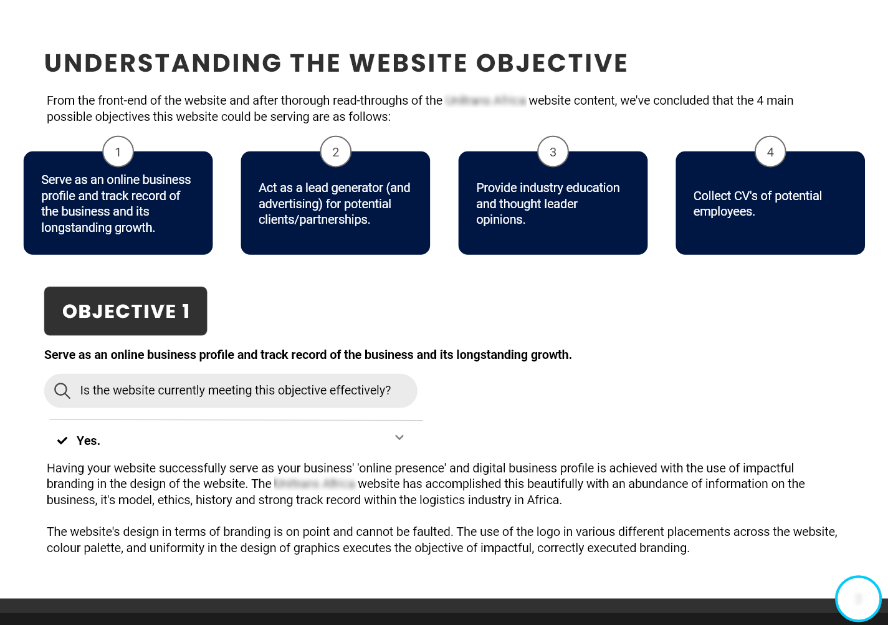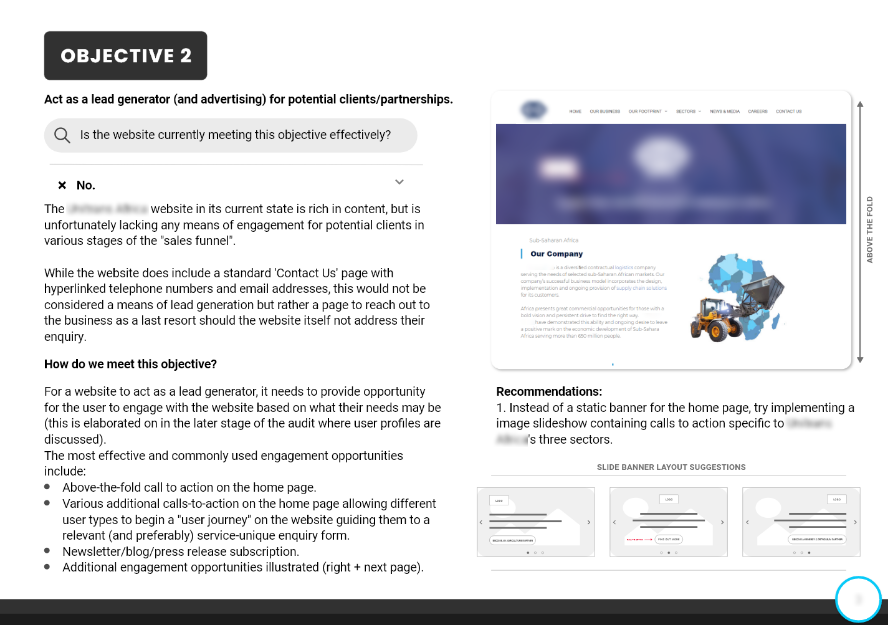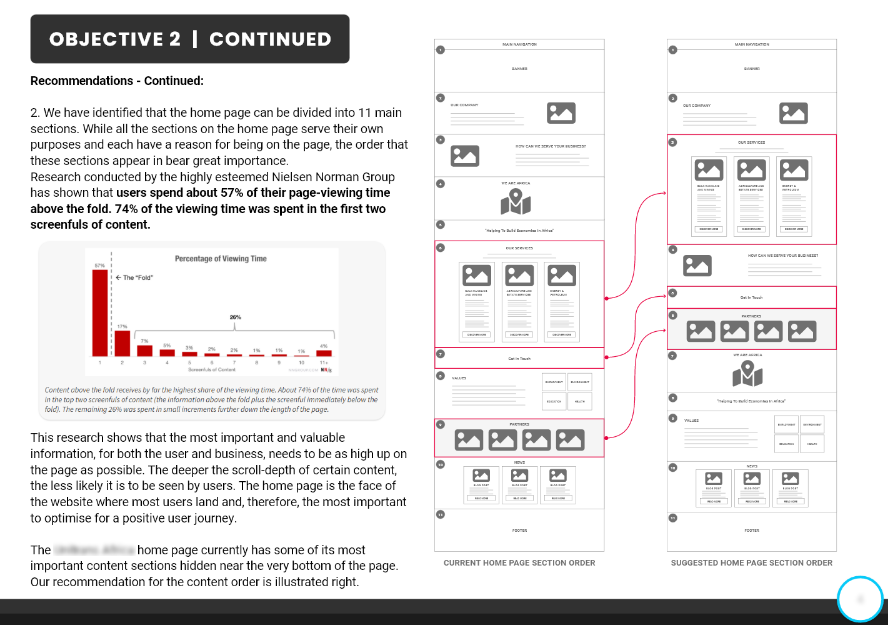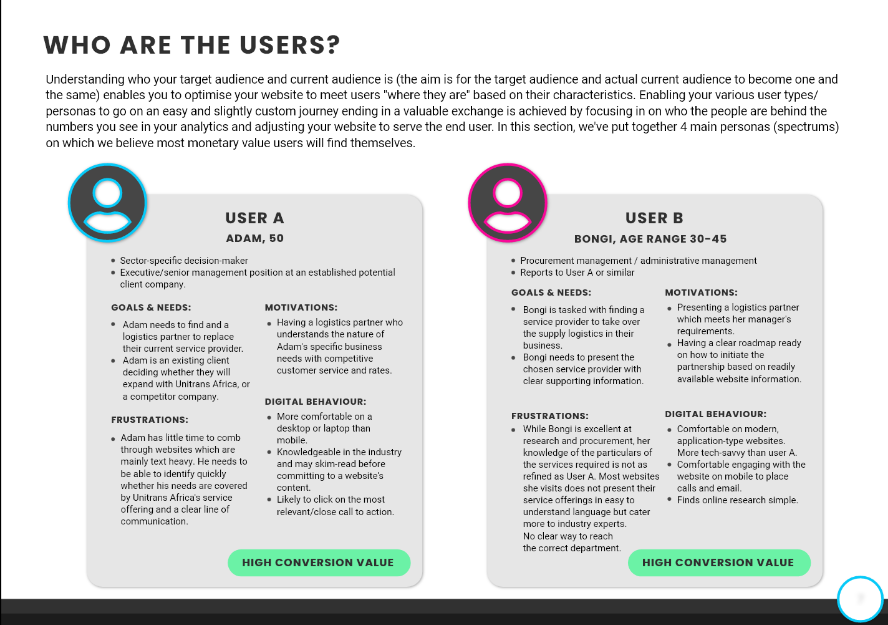Are the visitors to your website being guided effectively?
Driving people to your website through the likes of search engine optimisation, pay per click marketing and social media is half the story, the other half is making sure that those people are being guided to the correct place on your website, with ease and going on to perform the action you require. There’s little point in driving a lot of people to your website if they’re unable to use it and achieve the objective you’ve set out. This can be from interacting easily with a shopping cart to knowing where to click to seeing what services are on offer, and how to contact a company for a quote.

Don’t underestimate how crucial this is, look at these statistics:
- 39% of people will stop engaging with content when the images won’t load or the loading time takes too long.
- 88% of users are less likely to return to a website after a bad user experience (ref).
- PWC found that 32% of the customers would leave a brand they loved after just one bad experience.
- 52% of users say the main reason why they won’t return to a website is aesthetics (ref).
- Only 1% of users say e-commerce websites meet their expectations every time (ref).
- Only 55% of companies are currently conducting any user experience testing (ref).
- 68% of users wouldn’t submit a form if it required too much personal information (ref).
The “UX” in UX Design stands for User Experience, another buzz word coined by some clever marketers. What it boils down to is making sure that a website is designed in such a way that it has the correct elements in the correct places to ensure that a person arrives at what they’re looking for as quickly and easily as possible. No, we’re not talking about a massive red button saying “buy now”, we’re talking about a button that is well positioned and meets the visitor’s eyes with ease.
User experience design is becoming an essential part to every companies digital marketing strategy. With more people using the internet to find products and services than ever before, never before was there a better time to take user experience more seriously. There are millions of websites on the internet, but only a small percentage are correctly positioned. User experience is relatively new which gives us the edge over the websites you’re competing against.
Test this..
Perhaps try something, search in Google for something you’re interested in, perhaps a service and open up the first 5 or 6 websites that appear in the search results. When the websites open, look at them and within a short amount of time ask yourself, do you know the name of the company, does the company instill confidence and trust in you, do you know where they are, what services they offer, and how to get hold of them? All of this information should be immediately available and visible, this is all about a website giving you answers as quickly as possible just like Google’s success came from giving answers to searchers as quickly as possible. You also need to ask yourself, was finding the information easy? Did the website load quickly? What was the experience like on a mobile device? Was your experience on the website enjoyable? All of these questions are crucial and if you can’t answer yes to all of them, there’s a problem and the website could perform better!
Making sure that your website is positioned to hold the attention of a visitor and guides them to what they’re looking for should be a high priority once the digital marketing channels are driving a good number of visitors to your website.
What we can offer..
Our user experience audits dive deeply into all of this and uncover where your website is falling short. We do not only look at a website from a visual point of view but we look into your website visitor usage data as well as leverage our years of experience in design, building, and optimising websites to come up with a plan of action to help your website perform better for you.
Work Example
Below are some snapshots of a user experience audit we performed for a large company that offers logistics services throughout sub-Saharan Africa:




Purpose of the UX Audit..
We’ve transcended the age where simply “having a website” is enough for businesses outside of the eCommerce realm. In 2021, businesses are faced with an increasingly digitally aware audience – a phenomenon that has only been accelerated by Covid-19. Businesses of all industries, including logistics, now need to cater to users who want a one-stop website where all their questions will be clearly answered, their journey is guided, and the objective and the intended audience is clear with easy to follow calls to action ending in a transaction/engagement from which they (the user) gains value. This is now even the case for business websites catering to other businesses (B2B) and the need to become conscious of the individual user, whether they represent a business, large corporation, or a private person, their experience on the website needs to be equally simple and clear. In today’s market, users know that the next search result may have an easier user experience and it’s as easy as clicking “back” to lose a user forever.
In principle, a good user experience will allow any type of user, whether they are familiar with your business/industry or not, to understand what it is you offer, who you’re offering it to, and how to go about attaining what you are offering while making the journey seamless, enjoyable and aesthetically pleasing.
A User Experience Audit (UX Audit) is a way to pinpoint less-than-perfect areas of a digital product, such as a website, revealing which parts may be causing headaches for users and stymieing conversions.
How was the audit conducted?
The UX audit was conducted based only on the data available to a regular website user and is therefore based on the information provided by the website itself and UX and web design best practices.
In order to gain an understanding of where the pain points maybe for the website, this audit was conducted with the following questions and points as the main guideline:
- Understanding the business objectives of the website.
- Which different types of users may be attracted by the website and do they align with the business objectives’ intended audience?
- Understanding user objectives based on user type/persona.
Usability overview and compliance with UX standards and best practices. - Google Analytics Insights.
We are incredibly impressed with how thorough this audit is, and how it’s laid out in a manner that is easy to understand. We are excited to implement all of this on our website and take our company to the next level. We are very confident that this will give our company a huge boost.
Contact us if you want to take your website to the next level and leap ahead of your competitors.
